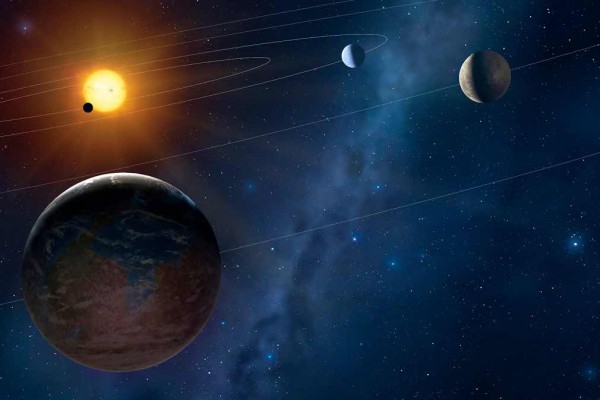Our entire universe may exist alongside another universe composed of dark matter, complete with an alternate Milky Way, physicists have suggested.
“There could be a mirror world where interesting things are going on,” said dark matter researcher James Bullock of the University of California-Irvine. “It means nature is much richer than we would otherwise know.”
The idea of dark matter was first proposed to explain the fact that based on observations of stellar bodies, the universe should contain five times as much matter as has ever been observed. Yet scientists have been unable to detect any sign of this matter beyond nor its gravitational effects. It remains essentially invisible, and other than through gravity it does not appear to interact with normal matter in any way.
WIMPs and positrons
Physicists have postulated that dark matter is composed of a previously unknown type of particle called a weakly interacting massive particle (WIMP). Current theories suggest that when WIMPs collide, they transform from dark matter into ordinary matter, including electrons and positrons. This process would, in some cases, create more positrons than electrons – in contrast with most observed physical processes, which create equal numbers.
In May 2011, the Alpha Magnetic Spectrometer was installed at the International Space Station in part to search the universe for signs of an excessive number of positrons relative to electrons. As of April 3, the first of these effects had been observed, although in small enough quantities that some factor other than dark matter might still be the cause.
If dark matter is the cause of the observed phenomenon, however, there is still another problem: the telescope has actually detected far more positrons than current dark matter theories predict. These “extra” positrons can be explained, however, by the “dark sector” theory.
A parallel universe?
Standard theories of dark matter predict that because WIMPs interact with each other only through gravity, they will rarely collide – in contrast with normal particles, which also interact via electromagnetic and nuclear forces.
Because the AMS suggests that WIMPs are colliding too often to be explained by gravity alone, theorists such as Neal Weiner of New York University suggest that perhaps some WIMPs are acting under the influence of yet-unknown forces.
“The basic model is very simple – we know that there are forces in nature, so the idea that dark matter might have its own is pretty easy to consider,” Weiner said.
Although the theory may be simple, the implications are radical. The existence of “dark” forces also suggests the existence of other dark particles, such as dark photons. It also suggests the existence of parallel galaxies.
Current models predict that all galaxies, including our own, are surrounded by clouds of dark matter. If this dark matter is affected only by gravity, then the clouds should be spherical in shape. But if some dark matter is also affected by other forces, then it will form more complex shapes, just like conventional galaxies. Thus some of the dark matter formerly assumed to surround the Milky Way would instead take the shape of a parallel dark Milky Way, spinning either along with our galaxy or tilted at an angle.
If the dark sector theory is correct, then dark particles may exist in as much staggering variety as conventional matter. According to Bullock, this actually makes the dark sector theory seem more realistic than mainstream theories of dark matter.
“Normal matter interacts with itself, so 20 percent of matter is really complicated,” Bullock said. “It’s funny that the other 80per cent [dark matter] is thought to be uncomplicated.”
Sources for this article include:http://www.newscientist.com
















